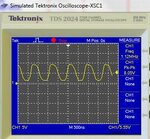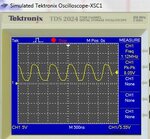mrmalaysian
Newbie level 4

Hi,
I need help to design circuit with output sinusoidal wave frequency 500kh-1Mhz, and Vpp-200V.
Basically, as far as know, the circuit should have an oscillator, amplifier and filter.
What circuit is the best for producing high freq?
Can I use 555 timer and freq doubler??
I need help to design circuit with output sinusoidal wave frequency 500kh-1Mhz, and Vpp-200V.
Basically, as far as know, the circuit should have an oscillator, amplifier and filter.
What circuit is the best for producing high freq?
Can I use 555 timer and freq doubler??








